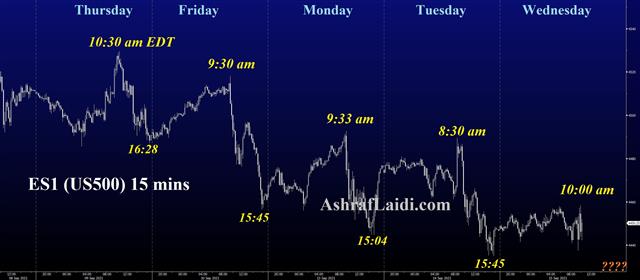Aussie Gets no Break

We wrote about China and global supply chain risks this week on here , and we got more evidence on Tuesday that those are curently the real market drivers -- not the Fed or inflation quirks.
Core US CPI in August rose just 0.1% compared to 0.3% expected. In year-over-year terms, it slowed to 4.0% versus 4.2% expected.
Initially, the FX market reaction was what you would expect with the dollar dipping 30 pips then extending that to around 50 pips across the board. Treasury yields sank, led by the long end.
Right around the time of the US equity open though, the theme changed as a broad risk off move unwound equity futures gains and reversed the dollar losses. As sentiment continued to sour, the dollar made further headway except against JPY and CHF.
What exactly the market is seeing (if anything) is unclear at the moment. The moves so far aren't big but they've been consistently in the same direction. That puts us on high alert for something the consensus is missing.
For non-CAD traders, we see more value than ever in following global data, particularly inflation. The pandemic kicked off at the same time nearly everywhere and the supply chain issues are global. Canadian inflation has had somewhat of a buffer from the rising CAD but what the market wants to know is the path forward. The US report Tuesday showed signs of a crest in inflation and that's likely to be globally synchronized, at least in developed countries.Latest IMTs
-
Gold Bear or Correction
by Ashraf Laidi | Oct 23, 2025 9:51
-
Gold Wave 3 تحديث موجات الذهب
by Ashraf Laidi | Sep 18, 2025 16:19
-
Forecaster App التطبيق الذي كنت تنتظره
by Ashraf Laidi | Jun 18, 2025 10:55
-
Updating GoldBugs تحديث مناجم الذهب
by Ashraf Laidi | Jun 16, 2025 13:58
-
Breaking Debt Ceiling & Forex Brokers
by Ashraf Laidi | Jun 6, 2025 17:33







